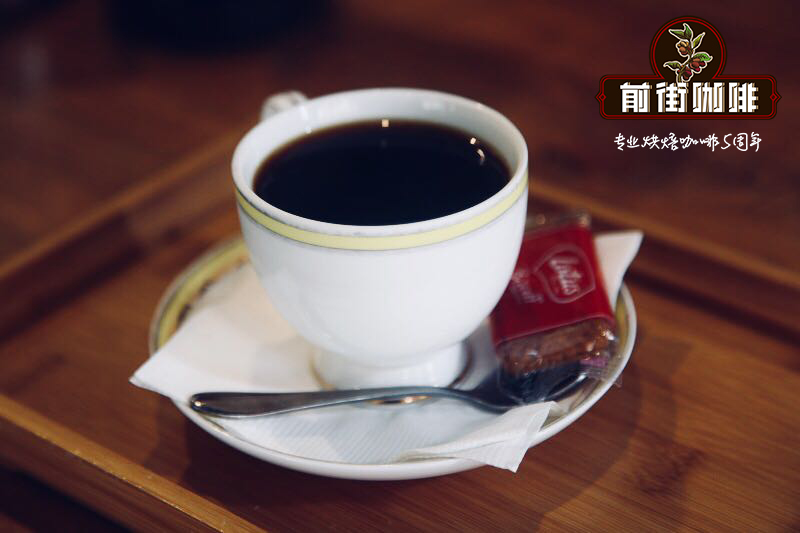Why are Arabica coffee beans used in ready-made coffee? are Arabica coffee beans expensive?

Professional coffee knowledge exchange more coffee bean information please follow the coffee workshop (Wechat official account cafe_style)
Why do all kinds of coffee promote 100% Arabica coffee beans, whether freshly ground or ready-to-drink, saying that they are Arabica coffee beans? does this taste really best suit the Chinese people?
In many places where freshly ground coffee is sold, we can see the word "Arabica coffee beans". For ordinary consumers who are not familiar with coffee knowledge, it makes people wonder whether this is a place name or a person's name.
Actually, neither.
"Arabica" is the variety name of the coffee tree. In addition to this variety, the coffee tree also has Robusta and Liberica. At present, the vast majority of coffee produced in the world is made of Arabica and Robusta coffee beans. Rabirika is often not included in the range of selection because of its low yield or poor quality.
Arabica beans, originally from the Ethiopian plateau, have accounted for 3/4 of the global coffee production after years of breeding, but only about 10% of these beans can be certified as premium coffee beans (Specialty Coffee). These Arabica beans have a balanced flavor and aroma. The three well-known coffee beans: Kona in Hawaii, Blue Mountains in Jamaica and Mocha in Yemen, belong to this kind of Arabica beans.
The truth.
In addition to the producing conditions of good Arabica coffee raw beans (volcanic soil, high altitude, temperature difference between day and night, rainfall, etc.), we should pay more attention to the fineness of the process of harvesting (manual picking, picking only ripe fruit), treatment (peeling, fermenting and removing pulp).
The cultivated land of a large manor is often thousands of mu. Therefore, it is also necessary to test and evaluate the quality of coffee in different blocks (hills) every year. Finally, the assembly line must be arranged to pick out the defective beans manually in order to really ensure the quality of raw beans in the consuming country.
The shelf life of coffee is very short. For more information, please see the overview of boutique (top) coffee. In general, what can be seen in the store is to pour the deep-baked beans directly into an open plastic container on a bean grinder or coffee maker. So, in fact, there is no way to tell which cup of coffee delivered to the hand is how long the coffee beans have been brewed?
The annual demand of chain cafes is huge, and it is an impossible task to spend a lot of money on high-grade Arabica raw beans under the premise of business (we must ensure shareholders' profits).
Independent cafes or self-baked cafes have sprung up in recent years, so be careful to choose those who really know and care about the quality of coffee to enjoy high-quality Arabica coffee.
In short, you have to be careful when drinking coffee out. So as not to spend money, but drink shoddy coffee. In addition to being a fat and unscrupulous businessman, he has to lose the health of himself and his family.
Subclassification of Arabica varieties
Coffee variety
In the world of "boutique coffee", Arabica varieties are only classified and discussed. The more representative varieties are:
Ancient native species: Typica (Tibica), Bourbon (bourbon)
Well-known Typica variants: Maragogype (Giant Elephant Bean), Geisha (nicknamed geisha bean … Because of the homonym with [geisha], etc.
Well-known Bourbon variants: Caturra (Kaddura), Pacas (Pacas), etc.
Well-known mixed race: Pacamara (Pacas + Giant Elephant Bean = Pacamara)
Taiwan coffee producing area
Taiwan is on the 23.5 degree Tropic of Cancer, which is suitable for growing coffee. At present, people are more familiar with producing areas such as Yunlin Gukeng, Nantou Huisun, Tainan Dongshan, Hualien Ruisui, and so on. The climate and soil in these areas are conducive to the cultivation of coffee trees, mostly Arabica species, with slightly nutty aromas, mellow coffee and low bitterness. In addition, in recent years, small farmers have also grown their own coffee in Sanjimen, Pingtung and Shimen, Taipei, mostly Arabica. Although the scope of cultivation is small, the coffee produced has a different style.
Although Taiwan's geographical location is in the latitude zone suitable for growing coffee, the labor cost of Taiwan is higher than that of coffee producing areas such as Africa, Central and South America or Indonesia. Due to cost considerations, the development of coffee in Taiwan is more likely to be restricted.
Important Notice :
前街咖啡 FrontStreet Coffee has moved to new addredd:
FrontStreet Coffee Address: 315,Donghua East Road,GuangZhou
Tel:020 38364473
- Prev

Hand-steaming coffee steaming skills hand-steaming coffee steaming without hamburgers? steaming failure?
Professional coffee knowledge exchange more coffee bean information please follow the coffee workshop (Wechat official account cafe_style) hand coffee steaming, hamburger is what? [steaming] in English instructions, it is often expressed as Bloom, which refers to the preparatory action of wetting a small amount of hot water evenly on the surface of coffee powder during hand flushing before formal water injection. [steaming] is to make hand bubbles.
- Next

Basic knowledge of Arabica coffee beans after washing and sunbathing
Professional coffee knowledge exchange more coffee bean information Please follow the coffee workshop (Wechat official account cafe_style) Why all kinds of coffee are promoting 100% Arabica coffee beans, whether ground or ready-to-drink, saying that they are Arabica coffee beans? does this taste really best suit the Chinese people? We can see selected Allah in many places where freshly ground coffee is sold.
Related
- Beginners will see the "Coffee pull flower" guide!
- What is the difference between ice blog purified milk and ordinary milk coffee?
- Why is the Philippines the largest producer of crops in Liberia?
- For coffee extraction, should the fine powder be retained?
- How does extracted espresso fill pressed powder? How much strength does it take to press the powder?
- How to make jasmine cold extract coffee? Is the jasmine + latte good?
- Will this little toy really make the coffee taste better? How does Lily Drip affect coffee extraction?
- Will the action of slapping the filter cup also affect coffee extraction?
- What's the difference between powder-to-water ratio and powder-to-liquid ratio?
- What is the Ethiopian local species? What does it have to do with Heirloom native species?

